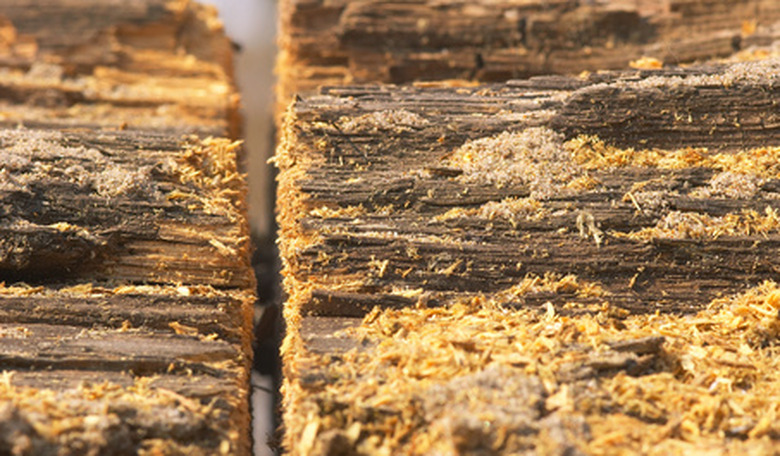How To Compost Sawdust
Things Needed
- High-nitrogen organic waste
- High-carbon organic waste
- Sawdust
- Shovel
- Gardening hose
- Manure fork
When it comes to sawdust in a compost heap, a little goes a long way. According to the University of Illinois Cooperative Extension, sawdust provides needed carbon in your compost heap, but its small particle size can negatively affect compost aeration. Add too much sawdust, and you'll quickly find yourself the proud owner of a compost heap that won't decompose. The oxygen-loving bacteria responsible for most of the decomposition in your compost heap cease microbial activity in the absence of oxygen. Avoid this problem by making sure you add plenty of other carbon-based organic waste to offset the density of the sawdust in your heap.
Step 1
Collect your composting materials, gathering equal amounts of high-nitrogen organic waste and high-carbon organic waste. Look for fresh, green materials to provide the nitrogen content in your compost heap, opting for proven nitrogen providers such as grass clippings and moist cow manure. Collect a variety of dry, brown waste, such as sawdust, dead leaves, straw and shredded newspaper, to provide the carbon content in the pile. Make sure your carbon-rich sawdust does not make up more than 1/5 of the volume of your composting materials, and keep it separate from the rest of your carbon materials.
- When it comes to sawdust in a compost heap, a little goes a long way.
- Avoid this problem by making sure you add plenty of other carbon-based organic waste to offset the density of the sawdust in your heap.
Step 2
Scoop off any topsoil covering the ground at your composting location to give decomposing bacteria instant access to your compost. Make sure your composting location is minimally 3 feet by 3 feet to allow adequate heating during the composting process.
Step 3
Spread a 4-inch layer of loose carbon waste across the bare dirt. Sprinkle approximately ¼ inch of sawdust on top of the other carbon materials. Spread a 2-to-3-inch layer of nitrogen-based waste on top of the sawdust. Let water from your garden hose trickle across the compost layers until all the materials are about as damp as a wrung-out sponge. Place additional alternating layers of carbon materials, sawdust and nitrogen materials on your compost heap, repeating the entire layering and wetting process until the heap measures at least 3 feet tall.
- Scoop off any topsoil covering the ground at your composting location to give decomposing bacteria instant access to your compost.
- Place additional alternating layers of carbon materials, sawdust and nitrogen materials on your compost heap, repeating the entire layering and wetting process until the heap measures at least 3 feet tall.
Step 4
Turn and mix your compost layers together once every five to seven days to promote adequate heap aeration. Shift materials from the center of the pile to the edges, and move waste from the edges of the pile to the center of the heap. Grasp and squeeze a handful of compost each time you turn the pile. According to the University of Illinois Cooperative Extension, you should be able to squeeze out no more than 2 drops of moisture. Add additional moisture, if necessary.
Tip
Your finished compost should be ready for use within four to six months, as long as you continue to turn the sawdust compost at least once weekly.
References
- University of Illinois Cooperative Extension: Materials for Composting
- University of Illinois Cooperative Extension: The Science of Composting
- "The Complete Compost Gardening Guide"; Barbara Pleasant & Deborah Martin; 2008
